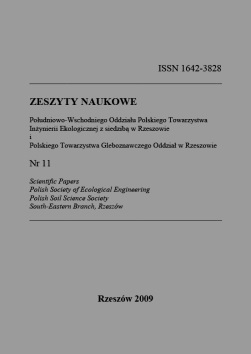Selected aspects of toxicology in earthworms in the context of sustanable development
Keywords:
earthworms, Lumbricidae, toxicology of the environment, sustainable developmentAbstract
Soil, constituting the basis for the food chain, is burdened with many toxic substances. This has an adverse effect not only on its biological diversity but also on quantity and quality of crops. The use of earthworms Lumbricidae earthworms for monitoring of the soil pollution has many benefits. Their advantage as bioindicator in this environment results from the fact that they are in contact with the soil, both through the external surface as their bodies and also internally, through their digestive tracks. Bioindicative properties of earthworms manifest themselves on different levels beginning from whole populations, bioindicators up to physiological or biochemical changes occuring in cells or individual organnella (biomarkers). For this reason experiments are conducted both in the field as well as in the laboratory and it is expected that the role of earthworms in toxicological studies will be increasing. Changes occuring under the influence of the stressor/ toxin in their cells may constitute and easy and cheap method of assessing soil contamination with various compounds. It is important from the point of the rules of sustained socio-economic development and protection of the environment.
Downloads
Downloads
Published
Issue
Section
License
Copyright (c) 2009 Polish Journal for Sustainable Development

This work is licensed under a Creative Commons Attribution-NonCommercial-NoDerivatives 4.0 International License.


